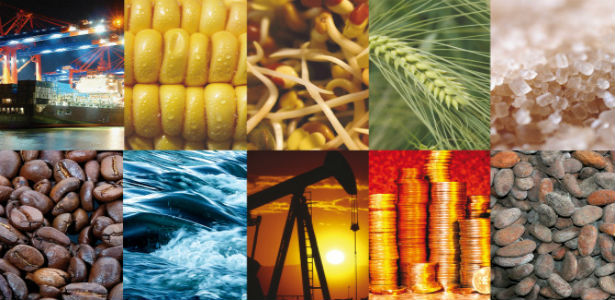|
|
Inflation ahead
The primary reason for investing in commodities should always be as an inflation hedge. Given the continued printing of money by the world's central banks, there is every reason to argue that higher inflation is coming in the future.
Many argue that the money printing that has taken place so far has not caused inflation, so why worry? We compare the current extreme monetary policy regime globally as similar to a person shaking a bottle of ketchup: nothing comes out the first few times you shake it, until suddenly more than you could possibly need pours out. In our view, sharply rising commodity prices since the beginning of the year are a warning sign that perhaps the inflationary times have begun. And the way to protect oneself is very clear: buy commodities.
Overproduction reversing
There are a number of supportive factors at play. First, many commodities fell in price as a result of overproduction following the previous price boom, made worse by the availability of cheap credit. The situation is quite different today – for example, in the oil market, where many US producers are going bankrupt. With prices down 70-80% in many commodities, production is no longer growing.
Dollar peaked?
Second, the dollar bull market from 2011 to 2015 was a major contributor to weak prices. Most commodities are priced in dollars, which means they became more expensive as the dollar surged. Moreover, when the dollar is strong it generally forces foreign central banks to adopt tighter policies in order to support their currencies, which restricts liquidity creation. But this year, the dynamic has started to reverse as the dollar has weakened. Of course, the dollar could start to strengthen again, especially if the Federal Reserve (Fed) starts tightening monetary policy more sharply. Historically, however, taking gold as an example, Fed tightening cycles have more often than not been unable to reverse the depreciating dollar trend or the rising commodity price trend (which is the main catalyst for tighter policy in the first place).
 ”Commodities are under-owned and under-researched. The relentless selling that has been seen in recent years has eased, but few investors have started to buy; the majority are extremely nervous. Nothing goes up in a straight line, and not every commodity will have yet seen a bottom. After some strong gains, it is normal to see corrections – which may be occurring for some (e.g. gold) right now. ”Commodities are under-owned and under-researched. The relentless selling that has been seen in recent years has eased, but few investors have started to buy; the majority are extremely nervous. Nothing goes up in a straight line, and not every commodity will have yet seen a bottom. After some strong gains, it is normal to see corrections – which may be occurring for some (e.g. gold) right now.“But in our view, when considering risk against potential return, the reasons to consider investing in a diversified, actively-managed commodity fund are as strong today as they are ever likely to be.” -- Geoff Blanning (photo), Head of Commodities, Schroders |
India's rising role
Third, the China-driven commodity boom may be over (for now) but we are seeing strongly-rising commodity demand from another emerging market: India.
India's demand for crude oil, for instance, is currently growing at a much faster rate than that of China, which is making a big difference to oil market dynamics, and Indian demand for a whole range of commodities, including palm oil, sugar, rubber and natural gas, is rising fast. In our view, India is likely to become a very important focus for commodity market participants in the future.
Natural gas is a classic example of a misunderstood commodity story currently: every day, we read in the financial press that natural gas is in oversupply, but these stories completely ignore the fact that, because the price has collapsed in the past two years, demand is rising. Liquid natural gas (LNG) in Asia, for instance, has fallen in price from $18/MMBtu to under $6 since 2014, and Indian LNG imports in 2016 to date are now 48% higher than last year!
The end of the down cycle
We believe we have witnessed the turning point for commodities. At least a dozen commodities have gained more than 10% this year and a number have gained over 30%; clearly, the bear market is over.
Commodities are under-owned and under-researched. The relentless selling that has been seen in recent years has eased, but few investors have started to buy; the majority are extremely nervous. Nothing goes up in a straight line, and not every commodity will have yet seen a bottom. After some strong gains, it is normal to see corrections – which may be occurring for some (e.g. gold) right now. And the poor outlook for China is still a major question for many industrial commodities such as copper. But in our view, when considering risk against potential return, the reasons to consider investing in a diversified, actively-managed commodity fund are as strong today as they are ever likely to be.


